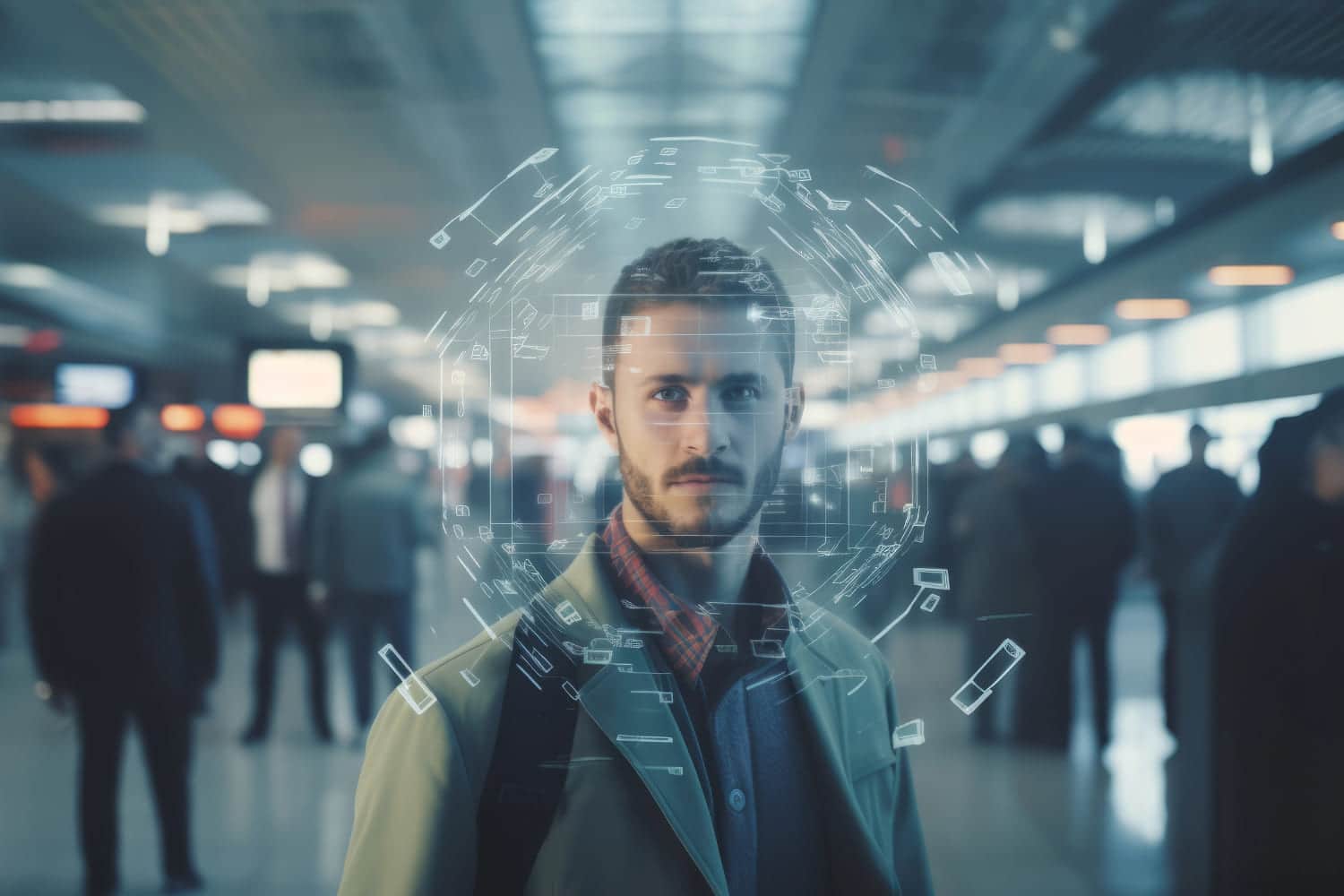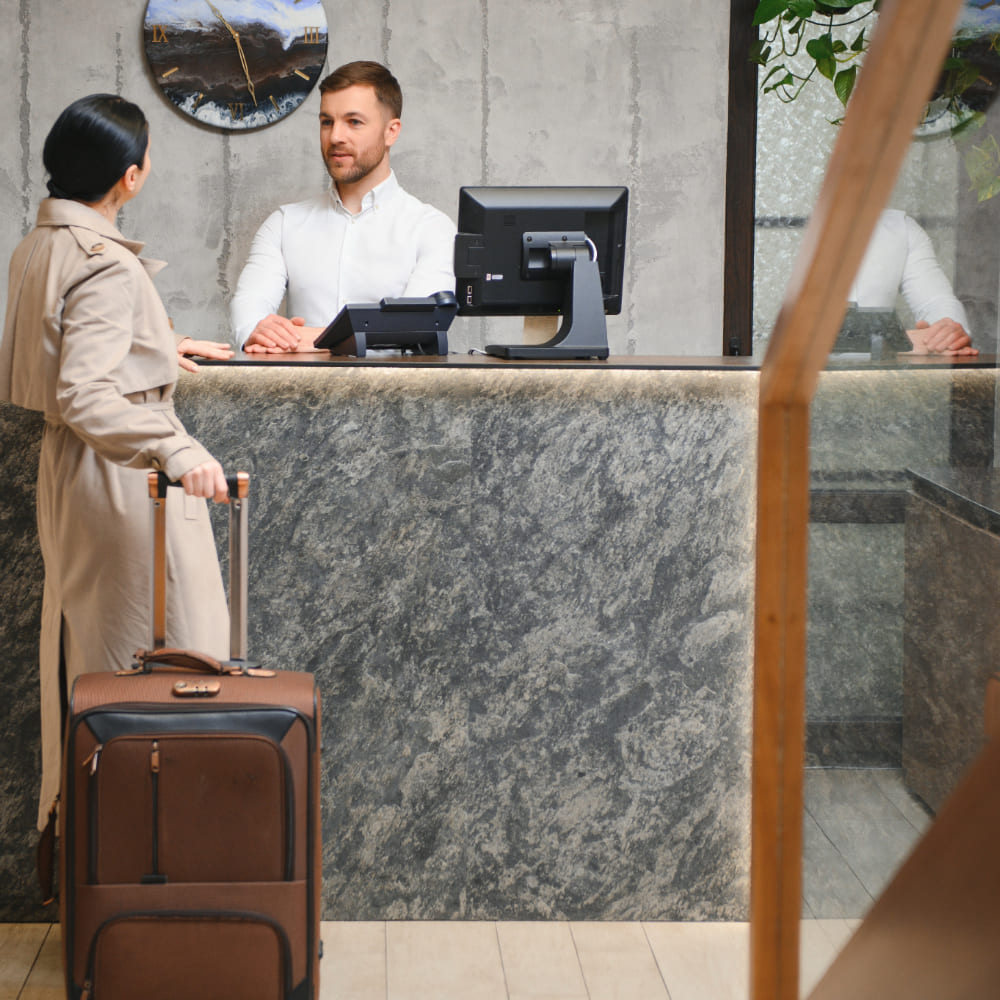The abandonment rate in the financial industry can be reduced — but only by addressing the underlying causes and redesigning digital experiences with real user needs in mind.
Transforming traveler experience with the power of biometrics

75% of travelers are open to the use of biometrics in their travels, especially at the airport. This number is an indication of the enormous potential of biometric technologies to make people’s lives easier and large infrastructures more profitable.
T
raveling, especially on commercial flights, often involves processes that can be frustrating for travelers. Security checks, presenting documents repeatedly, and long lines usually create tension and negatively affect the overall travel experience. Biometric technology, with facial recognition at the forefront, emerges as an innovative solution to alleviate these annoyances and significantly improve the entire travel process.
Fighting fraud by improving the customer experience
Most of the frustrations experienced by travelers are related to security and identity verification. Creating a smoother travel environment will have a positive impact on, among other things, the image of airports and public confidence in the infrastructure.
Several airports already have programs in place that allow passage through airport facilities without the need for paper documentation or with the use of an app. This is possible thanks to the use of the latest technological advances in biometrics and electronic identification. Instead, boarding passes linked to a biometric identifier are used through facial recognition technology.
According to the latest Global Passenger Survey conducted by IATA, 75% of passengers prefer using biometric data instead of traditional passports and boarding passes. In 2023, 46% of travelers used some biometric system for identification, meaning an increase of 9% from 2022.
Of those who used biometric identification in 2023 during their travels, 46% reported an 85% satisfaction rate. This acceptance underlines the interest and trust of travelers in biometric technology. By integrating these solutions, airlines and airports can offer a smoother and more pleasant travel experience.
Constantly searching for your passport or boarding pass (even if it’s from a mobile app) at each checkpoint creates insecurity and unnecessary friction. Through the use of unique traits such as fingerprints, facial recognition or iris scans, biometrics allows for the quick and accurate identification of travelers. This makes security checks more efficient and eliminates the need to repeatedly present documents.
Biometrics not only speeds up processes but also contributes to improving security. It reduces the risk of identity theft and makes it easier to control travelers.
In the case of BioID, TrustCloud’s biometric recognition technology, the user’s image is transformed into an electronic pattern used according to the use case. Contact one of our experts now and learn how BioID prevents fraud and identity theft.
Innovations to redefine identity and document verification
The latest proposals for biometric verification of travelers aim to confirm identity and verify the validity of documentation directly from home.
Using a camera device, passengers would photograph their identification document (ID card or passport) during the booking process before arriving at the airport. Subsequently, they would perform a biometric capture of their face, and optionally, a proof of life test could be added. This test could be active, asking the user to say words aloud or make slight head movements, or passive, where the traveler would not have to do anything, and the system would record the person’s presence throughout the process. At best, biometric technology would be equipped with deepfake detection systems to prevent impersonation and fraud. The physical attributes resulting from the biometric capture would be compared to those on the identification document.
This method of biometric identification is highly effective because facial recognition or liveness detection has unique characteristics that ensure a person is who they claim to be.
Once verified, the passenger’s biometric data is stored in the airport or airline app for a specific period, allowing the traveler to pass through checkpoints without difficulty.
Biometrics as part of a mobility strategy
At many major airports around the world, ambitious plans are underway to transform the traveler experience through the use of biometric systems.
- South Africa is investing over $5 million to develop a project aimed at reducing queues caused by time-consuming physical authorizations. The state-owned Airports Company South Africa (ACSA) emphasizes that the use of robotics and artificial intelligence will be crucial in this initiative, which aims to improve efficiency in airports.
- Lufthansa has introduced biometrics in the Schengen Business Lounge at Munich Airport, allowing business class and frequent flyers to access without showing their boarding pass. This is achieved through a robust facial recognition system. Passengers must register on an app 24 hours before the flight and complete the process with their passport.
- Also in Munich, a pilot project of autonomous boarding bridges is underway, adding to the growing list of enhanced systems with biometrics.
- The Wayne County Metropolitan Airport in Detroit has activated a system that allows passenger verification and self-check-in of luggage without the assistance of an airport agent. Machines, located in six units of the airport, can link a passenger’s travel document scan with their face for authentication.
- In Singapore, to efficiently manage the high volume of travelers, the government is developing a bill proposing the use of biometrics and other automated systems. The process will use biometric analysis as an authentication method at various automated points, from baggage check to immigration and boarding.
Control and time savings without sacrificing privacy
The use of biometric features, such as fingerprints, facial recognition, or iris scanning, streamlines traveler identity verification, reducing waiting times and improving efficiency at airports and other control checks. However, the collection and storage of biometric data can raise privacy concerns.
To address these concerns, it is essential to adopt clear and transparent measures regarding the handling and protection of data. Authorities and companies must assure travelers that biometric data will be used exclusively for identification and security purposes, and that robust security measures will be implemented to prevent unauthorized access.
Choosing providers with ethical standards and solid certifications helps alleviate concerns. In this sense, TrustCloud’s BioID never shares the image of the person with third parties and works with encrypted and tokenized patterns, safeguarding all the assets generated in the transactions in Vault, an armored domain in which the integrity of all the data and metadata is guaranteed.
Finding the right balance between convenience and identity protection will be critical to ensuring widespread adoption of biometrics for travel.
Inquire about TrustCloud’s qualified biometric technology now.
























